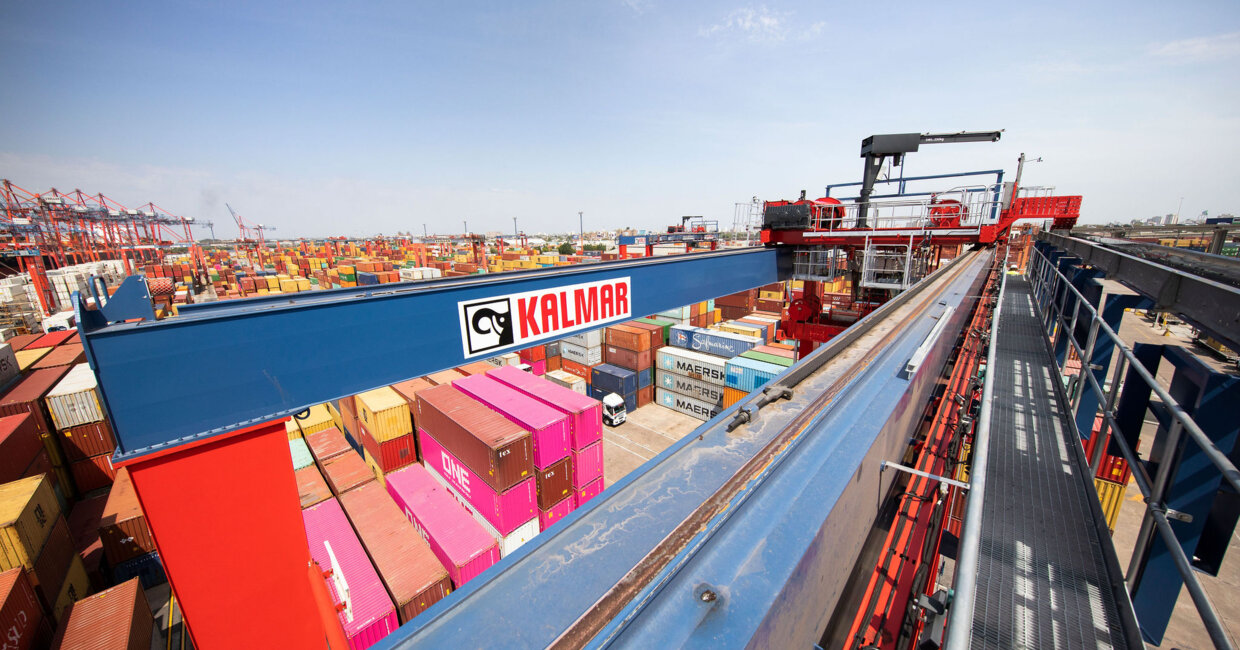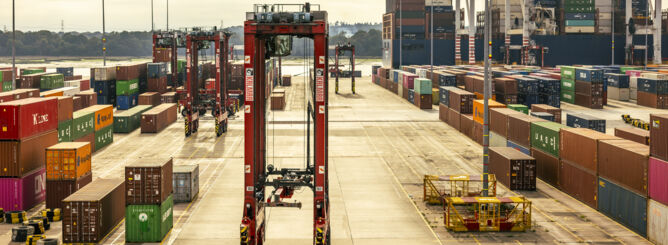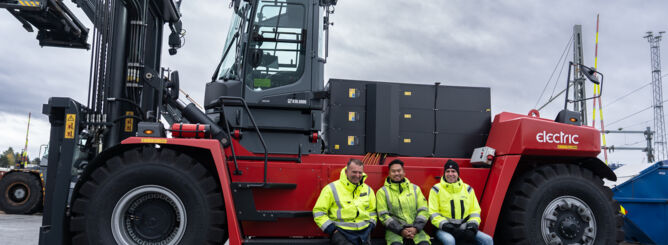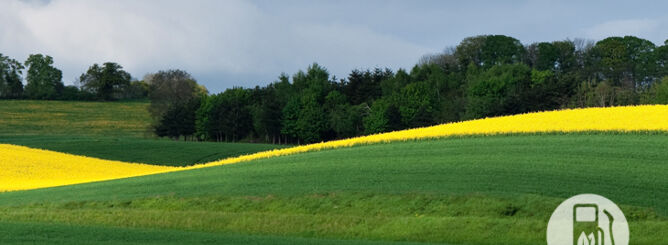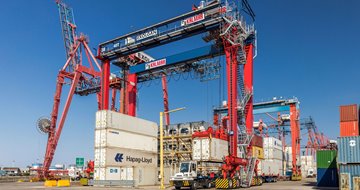Enhancing RTG eco-efficiency with smart design and driveline choices
Our June webinar revealed how smart design thinking and the right choice of driveline can deliver impressive savings for RTG operations in terms of fuel, emissions, maintenance and noise levels. In this article we’ve gathered the key takeaways with a focus on the flexibility offered by the latest-generation hybrid technologies.
The Kalmar RTG’s distinguished history stretches back to 1967, when the mobile gantry crane was first introduced to the world. Over half a century later this flexible and eco-efficient platform is available with true hybrid, diesel-electric and fully electric driveline options.
Eco-efficiency planning begins at the drawing board
Before we start thinking about which RTG driveline is the optimal choice in terms of eco-efficient operations, there are several other design details that can help to achieve big gains in fuel efficiency.
“We have worked for decades to improve the eco-efficiency of cargo handling, and our RTG offering is a great example of this,” says Marko Rasinen, Product Manager, RTG, Kalmar Automation Solutions.
Lighter, simpler and easier to maintain
Structural design, essentially the weight of the crane, makes a big difference when it comes to fuel consumption. By simplifying the design and optimizing the structure with high-grade steel it’s possible to save up to 0.5 litres of fuel per hour. Lowering the weight of the crane has some positive knock-on effects too, like reduced ground pressure, which reduces civil works costs.
The choice of all-electric vs. hydraulic design is another important consideration. Hydraulic setups have traditionally been used for spreaders and for gantry-wheel turning and micromovements, but switching to all-electric can cut fuel consumption by as much as two litres per hour, with the added bonus of reduced maintenance costs because of fewer moving parts.
“The combined weight of the spreader/headblock unit makes a big difference too, since this equipment is lifted and lowered twice every move. Minimising the weight here can deliver up to a litre of fuel savings per hour,” Marko points out. “Even lighting can make a contribution, with energy-efficient LED lights offering a potential saving of 0.5 litres of fuel per hour,” he continues.
Finally there’s the choice of variable speed generator (VSG) vs. constant speed generator. By matching engine RPMs with the necessary power, a VSG can achieve potential fuel savings of as much as 2.5 litres per hour.
One size doesn't fit all
What’s right for one terminal might not be right for another, no matter how similar their operational setups. Having a range of alternatives is therefore important. In terms of drivelines, with the Kalmar RTG there are plenty to choose from: the fully electric Kalmar Zero Emission RTG, the diesel-powered Kalmar SmartPower RTG and Kalmar Classic RTG, and the Kalmar Hybrid RTG, which uses lithium-ion (Li-ion) battery packs as its main source of energy.
This last variant has been a the most popular choice with terminal operators of all kinds around the world because of its huge potential for fuel and emission savings.
“The Li-ion batteries, which come with a five-year warranty, are combined with a smaller diesel power unit, which is not only highly fuel-efficient – consuming as much as 60% less fuel (typically around 6.5 litres per hour) than a conventionally powered RTG, with a corresponding reduction in CO2 emissions – but also quieter and easier to maintain,” Marko explains.
The diesel power unit’s running hours are significantly reduced because it is not used to power any of the crane functions, only to charge the batteries – which take care of all the lifting, lowering and driving operations. Fewer engine running hours not only mean less fuel is consumed but also less component wear. And with the batteries doing all the work, noise emissions are also significantly reduced. “The batteries are also virtually maintenance-free, requiring only checkups,” Marko highlights. “Furthermore, they can store regenerative energy from lifting and lowering operations, which is an important factor in achieving such low fuel-consumption levels.”
An attractive option where full electrification isn’t possible
While going fully electric is the preferable option from a sustainability perspective, in some locations it simply isn’t viable. This may be because of a lack of space to install the cable or busbar infrastructure at the terminal, or because the grid supply is unreliable.
Our collaboration with Exolgan Container Terminal in Buenos Aires is a prime example of how hybrid technologies are living up to their promises in terms of fuel savings, emission reductions and safety performance. Exolgan currently operates four Kalmar Hybrid RTGs, with two more due for delivery in late 2020. Read more about how we are blazing the hybrid trail with Exolgan, helping them to cut RTG fuel consumption from 12–13 litres per hour to just 5.4 with no changes to their operating model or infrastructure.
Full automation for RTGs is another area where Kalmar is leading the way, as demonstrated by our cooperation with Dublin Ferryport Terminals in Ireland, where the Kalmar AutoRTG system is helping the customer to enhance the safety and efficiency of their operations.
